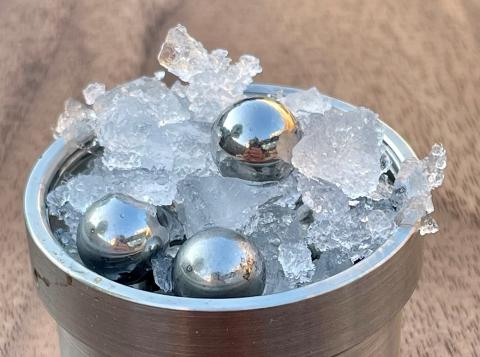
The discovery came as a team of researchers were combing the shores of the Spanish island of Tenerife in the Canaries. Time and again, set against the sparkling waters that lapped the Playa Grande, they spotted clumps of hardened tar, dotted with tiny, colourful fragments of plastic.
They swiftly realised that this combination of tar and microplastics – or “plastitar” as they named it – was unlike any other plastic pollution they had seen.
“No longer is the presence of plastic in the environment limited to microplastics or a bottle in the sea,” said Javier Hernández Borges, an associate professor of analytical chemistry at the University of La Laguna in Tenerife, who coined the term plastitar. “Now it’s giving rise to new formations; in this case, one that combines two contaminants.”
More than two years after researchers stumbled across it, the find has been captured in new research that describes it as an “unassessed threat” for coastal environments. It adds to a growing list of marine pollution fashioned out of plastic, from pyroplastics – melted plastic that takes on the appearance of small rocks – to plastiglomerates, formed from a combination of melted plastic, beach sediment and basalt lava fragments.
When it comes to plastitar, its formation is simple: as residue from oil spills in the ocean evaporates and weathers, it washes ashore as tar balls that cling to the rocky shores of the Canary Islands. “It acts like Play-Doh,” Hernández Borges said. “And when waves carrying microplastics or any other kind of marine debris crash on to the rocks, this debris sticks to the tar.”
As time goes on, the formation hardens, with everything from bits of discarded fishing gear to plastic pellets and remnants of polyester and nylon becoming fused to the tar.
The researchers found plastitar along the shorelines of several islands in the Canaries, including El Hierro and Lanzarote. It was widespread, in one case stretching across more than half of the area they were examining. The team linked its presence to the archipelago’s location along a key shipping route for oil tankers but they have little doubt that plastitar exists around the world.
“We’re convinced that this is probably found wherever you see this combination of tar – which unfortunately remains common on beaches – and microplastics,” Hernández Borges said.
While more research needs to be done to confirm plastitar’s impact on the environment, researchers believe that its combination of hydrocarbons and microplastics means it will potentially leak toxic chemicals, causing conditions that could prove deadly for organisms such as algae.
“In some way, it may be blocking and inhibiting the development of the ecosystem,” Hernández Borges said.
The discovery feeds into the emerging picture of a global plastic cycle, with plastic moving through the atmosphere, oceans and land in a way that echoes natural processes such as the carbon cycle.
“There are researchers who are talking about the fact that plastic is so pervasive that it could be affecting our environment in other ways,” Hernández Borges said. “So if plastic is giving rise to other formations, this is extremely important.”












